Animal Vision Science

OVERVIEW |
|
In early 2014 our curiosity sent us down a path of research and development that lead to the creation of Desolve Camouflage, a pattern designed to fool animals, not hunters. Our research highlighted the massive problems with current “sticks and leaves” styles of camouflage. Ungulates (hooved animals) don’t see the way we do, instead their vision is blurrier so they don't focus on detail, instead they have been trained to focus their attention on outline. A new style of camo that breaks up this outline with large macro and micro shapes creates the illusion of depth, so the subject appears to be a series of small objects spread out across a range of distances. Desolve Camouflage was developed and tested in the field over the course of hundreds of hours to manipulate the specific colour and light tones most prominent to ungulates and the results are simply astonishing. |

WHY WE MADE DESOLVE CAMOUFLAGE |
|
The creation of Desolve Camouflage was born purely out of curiosity. We are passionate hunters and we’ve always had a drive to find bigger trophies, make longer shots, get closer and understand the animals better. It seems that almost every hunter has a story about watching a deer in clearing, sitting dead still in the shade, down wind and hundreds of yards away, and all of a sudden that deer looks up and stares straight at them. These stories combined with the never clear stories about UV light and enhanced vision dragged us on to the internet to try and figure out what exactly was going on with animal vision and how could we improve what we were doing to hide ourselves from it. What we found spurred us into action to make some drastic and urgent changes to the way we produced camouflage. |

THE RESEARCH PHASE
|
|
SOURCES When it came to embarking on the major task of researching the properties of animal vision, we started by setting out some clear parameters around the process in order to try and remain as objective as possible. We believed that this would be crucial in achieving the best results for the development phase. This may seem obvious but it’s important to consider that we were all deep in the hunting world already and had likely formed biases in how we expected the vision and patterns to work based on personal experiences, whether we knew it or not. In short, the research was conducted by collecting over 50 sources of seemingly credible reports and articles both secondary and primary. The two criteria that we bound ourselves to were A; They must have come from a qualified scientific background directly in the field of ungulate vision and B; The studies or papers must have been published since the year 2000. From here we aligned all the research and extracted all the commonalities in the findings and excluded all the contradictory conjecture. This left us with clear objective findings that we could now directly apply to the development phase of our new camouflage pattern. Much of the research we used was long and quite technical in nature. However, listed below are links to some of the easier to read, straight to the point websites and articles that may be of interest:
THE COLOURS THAT ANIMALS SEE
Most all animal’s eyes are made up of a series of internal rods and cones. Each of these serves a function of interpreting light as shape and colour. Ungulates or hooved animals have been determined to lack the cones required to easily discern colours in the red spectrum. From this we can determine that that they are effectively red-green colour-blind. This means that most shades of greens, browns, yellows, oranges and reds are all seen as one similar colour to deer. This is why hunters are able to wear bright blaze orange clothes without standing out from the natural surrounding environment. However, it should be noted that the other side of the colour table, blue, can be determined as extremely out of place to a deer just as it is to the human eye.
|

|
ULTRA VIOLET (UV) LIGHT |

|
DEPTH PERCEPTION AND CLARITY |

|
The main thing that we really need to know though is that both the detail and clarity are reduced in ungulate vision compared to human vision. The easiest way to think of this is to imagine that deer see a slightly blurry image, as if they need glasses. Now because of this they identify their potential threats based primarily on outlines and shapes. They are hard wired to identify harsh outlines of objects and symmetry in these outlines. So for example a tigers silhouette has a sharp outline too it compared to a broken up bush with thousands of small leaves. Also the tiger facing front on to the prey will also have a nice symmetrical shape to it. Both of these elements set off a warning signal to the prey. Now this is probably the most important point when we think about camouflaging ourselves from our prey. This tells us that the detail and realism of the leaf and stick shapes in the camouflage pattern aren’t actually very important as they aren’t able to be clearly defined by an ungulate anyway. What is important, is our outline! |

|
DISRUPTION VS MIMICRY |

|
NIGHT VISION |

|
Because of this process deer and most other hooved animals have far greater night vision than humans. This Tapetum Lucidum layer has probably evolved to give prey animals the ability to feed at night under the cover of darkness when their predators are in bed. Unfortunately for the prey however it seems that most of their natural predators, big cats, dogs etc, have evolved to keep up and now see just as well in the dark. |

|
THE COMPLETE VIEW |

DRAWING INSPIRATION FROM NATURE |
|
Both predators and prey throughout the entire animal kingdom utilize these elements of camouflage to disguise themselves. As hunters with a passion for the animals we target, we drew inspiration from some of these perfected hunting machines. Big cats are probably the best example of ungulate hunters and it is fascinating to see that they predominantly use two different methods of concealment. For example, Tigers use a macro or “broad range” pattern to conceal themselves. Their hunting style is more of a stalking method. This means that at a longer distance the tiger needs to be hidden as he closes the gap, much like a spot and stalk bow hunter. The leopard on the other hand uses a micro or “narrow range” pattern. Their hunting style is quite different in that they ambush their prey. They sit down tight and hide until the victim is close at which time they pounce. Therefore, a smaller detailed pattern is necessary up close. This could be compared to a hunter calling in close quarter rutting deer or tree stand hunting. |

DEVELOPMENT AND TESTING |
|
STAGE 1
With all this research behind us we proceeded to experiment with a large number of patterns that followed the principals of contrasting Micro and Macro patterns. Macro patterns can be thought of as the big chunks in the pattern. These are the most important parts as they are the ones that break up the outline from about 20 meters away and beyond. The Micro patterns are the small pieces of the pattern. These are used to for primarily to add detail for when the subject is close and to add the natural business of the environment. This is effectively used to break up the outlines of the Macro patterns. We drew up a large grid template and experimented with different ratios of Micro and Macro patterns until we had a spread of three variants, one with more micro that macro, one about 50/50 and one with more macro than micro. These were then advanced to the initial testing phase. Three basic shades of green and brown were used initially with the intention of fine tuning later. For the initial testing phase we photographed the three patterns at 20m, 50m, 100m and 300m. This process was repeated in three common and contrasting hunting terrains, forest, riverbed and open tops. These images were then filtered to remove the red colour spectrum to as close as we could determine an ungulate would see in. These images were then filtered with a couple of blurring effects to replicate the lesser definition described earlier. From here we had a series of “animal vision” images that we could compare to determine the best of the three patterns in regard to silhouette (outline) disruption. These blind tests quickly revealed that our 50/50 mix pattern was the best at creating this effect. With a few fine tweaks we had our first pattern ready for a more in depth testing phase.
STAGE 2
Now that we had our first pattern established. The next step was to take it out in to the field and experiment with it. We printed the pattern on large sheets on fabric and took them into the hills. We played around with wrapping the sheets around trees, rocks, people and so on and viewed these from a number of different angles, in a large variety of terrains and backdrops, at varying distances and of course photographed and filmed all of this so that we could later apply our animal vision filters to it. A few things became apparent from all the testing. First we wanted to experiment with a third size in our pattern. Something that would fit between the Micro and Macro size for a specific distance. At around 25m - 35m we felt the Micro wasn’t quite doing enough to break up the Macro edges. Next we needed to tune the colours to experiment with contrast. Contrary to mimicry patterns, the disruption pattern needs to be quite high contrast to give the illusion that two parts of the pattern are two different objects. We were able to experiment with this a lot on the computer by adjusting photos and from this we created another series of samples with the most promising shades for further field testing. We also decided to introduce a shadow element to our macro parts to help further this illusion of depth.
STAGE 3
As we were now starting to really fine tune the pattern we again followed the previous steps with testing in different light and distances, but we also started playing around with some blind “Where’s Wally” type tests. From the countless hours poured in to this testing we finally were able to proudly produce the Desolve Veil camouflage pattern.
COMPARING DESOLVE VEIL AGAINST MIMICRY PATTERNS
Now that we had finally had a strong understanding of how ungulate vision worked and how we could take a different approach to camouflage, we were able to compare our new disruption pattern to the popular mimicry patterns. Once again, we headed in to the field and photographed Desolve Veil next to the main mimicry patterns at a variety of ranges and terrains and apply our animal vision filters. The resulting images were astounding! The sticks and leaves patterns for the most part were instantly recognisable at all distances when not placed perfectly in amongst exact replicas of its pattern. The disruption pattern on the other hand melted seamlessly into just about every image as we had found in our testing phases.
|

